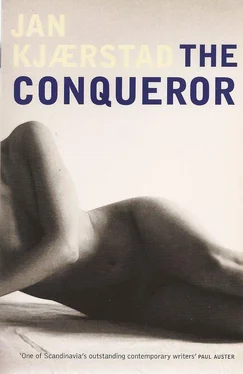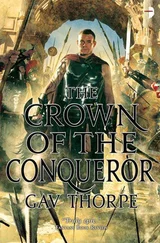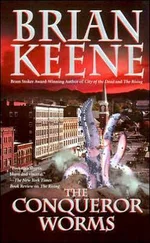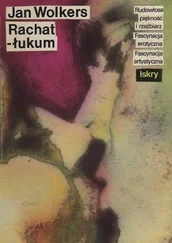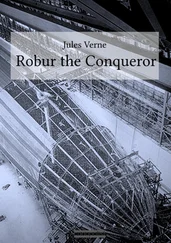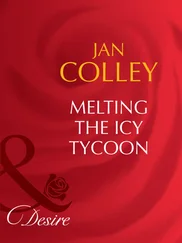This was the programme’s key scene: Sonja on the little tarn, alone, in a wintry Norwegian forest, alone with her skates and the stars, executing a high-speed dance across a mirror-like expanse of ice. Jonas highlighted the physical nature of figure skating, the stamina it craved, by running the sequence without music, by amplifying the sound of the skates cutting through the ice, and that of Sonja’s heavy breathing. With an adoring camera, Jonas Wergeland managed to convey the difficulty and beauty of, and the effort involved in, some of the figures from those days, for example the execution of three figure of eights in succession in such a way that it looked like just one. It was Sonja alone on the ice, encircled by snow-laden pine trees, skipping, gliding, swooping, in the midst of a strange display, like a rite, the blade of the skate etching figures in the ice, heavy breathing and the swish of swift swirling movement. ‘Talk about an undertow,’ was the cameraman’s comment.
A lot has been said about Jonas Wergeland’s intelligent filming — before that earth-shattering scandal, that is — about a producer who finally took people’s intellect seriously. What rubbish! The truth is that Jonas Wergeland understood, better than anyone else, that television was first and foremost based on emotions, on the irrational. Jonas Wergeland knew that you conquered a nation not by appealing to its reason but by bombarding its senses. Which meant that you had to simplify. And the challenge, as he saw it, lay in coming up with the best, the most surprising form of simplification, the one which could, to greatest effect, reduce even a complex life to a few essential and comprehensible figures that could be etched out in a flurry of ice, like a figure of eight on a frozen lake: simple and yet infinitely fascinating.
For this reason Jonas Wergeland built his programme on Sonja Henie primarily around the techniques of figure skating and, in the first sequence, on the jumps in particular: the axels, the lutzes and the split jumps, soaring leaps rendered even more impressive by the lowering of the camera as Sonja took off. Over and over again. Almost dauntingly simple. And therefore so entrancing. Many viewers claimed to have experienced a feeling of weightlessness; and perhaps that, when you get right down to it, is what figure skating is all about: becoming weightless, suspending gravity, soaring up to the stars.
Jonas had Sonja conclude this part of the programme with a move of her own invention, ‘the strip’, in which she glided backwards, balancing on the toe of one skate and leaving a glorious groove in the ice, to simulate the way in which she had cut her way through the ice and the firmament, like a diamond through glass, to suddenly find herself in another world, the one place where she had always dreamed of being: Hollywood.
The Hollywood sequence concentrated on the first of the eleven films she had made in the USA, One in a Million . They reconstructed a number of meetings between Sonja and Darryl F. Zanuck, the redoubtable head of 20th Century Fox, and made much of the fact that she secured herself a sensational five-year contract and a stupendous amount of money for each film, even though she had no experience in front of the camera. They also showed a clip from One in a Million , the story of a country girl who becomes Olympic champion, then turns professional and scores an overwhelming success at Madison Square Gardens — in other words, pretty much identical to Sonja’s own story. The film culminated in a lavish set piece, a forerunner to her ice shows, in which Sonja twirled and leaped in a skating ballet featuring hundreds of girls in extravagant costumes, as if in some glamorous opera on ice.
In also illustrating how this film was received, with an acclaim that fulfilled all expectations, Jonas aimed to make two points. Firstly, that Sonja Henie was the greatest Norwegian film star of all time. In short, she conquered that most impregnable of all realms: Hollywood. And secondly — and it is surprising how often this is forgotten — Sonja Henie was a brilliant figure skater, a true virtuoso, three times Olympic champion. And when she won such a victory — even in a silly film in which she spoke dreadful English and only had two facial expressions to choose from, with a script which was nothing but a mishmash of romantic drivel, sets composed of fake ice and artificial snow and the Swiss Alps as backdrop — it was thanks solely to her charm, her personality and her skating skills, the fact that she sparkled, did things on skates which the audience could not have imagined possible and which made them cheer in admiration. Even a few clips from this second-rate — and antiquated — film was enough to show viewers why Sonja Henie deserved to be called one of the western world’s first superstars. There was no lack of response either — interestingly enough in a day and age when television channels strove so hard to encourage viewers to take an active part in programmes: NRK, the Norwegian Broadcasting Corporation, was inundated with letters and faxes, the switchboard jammed by calls from people wanting to compliment Jonas Wergeland on how well he had comported himself on skates in his own regular slot and demanding that NRK show all of Sonja Henie’s films immediately, which they duly did, to the great delight and satisfaction of the nation.
The transition from Hollywood to the programme’s closing sequence was a masterstroke: from thunderous applause straight into a soundless pirouette, a vertiginous whirl, and then, clearer and clearer, the solitary sound of the blade on the ice, Sonja alone again on the tarn on a winter’s night in Norway, in a magical — some said, demonic — atmosphere. Jonas lingered particularly on the pirouettes now, the corkscrew turns, imparting a sense of how mind-reeling they were, ecstatic almost, as if executed by a seductive winter dryad or by a dervish attempting to throw himself into a trance. And for Sonja, figure skating had as much to do with mystery as it did with the dream of winning, of conquering the world. Jonas ran the turns in slow motion, very, very slowly, such that the shots of the solitary, pirouetting woman had as mesmerizing an effect as any big production number from Hollywood with its meticulously choreographed repetitions, duplications and symmetrical formations.
And then, again: Sonja Henie, zooming along, alone on the ice, alone with her skates and yet happy here, on the ice, with her dancing, her art. Jonas Wergeland took issue, indirectly, with the myth that said that all her life Sonja Henie was a lonely, unhappy child who never found real purpose. The way Jonas saw it, and presented it to the people of Norway, she did find happiness, here, in her pirouettes, in the total control, in the innate musicality of her movements, in the jumps, in speeding across the ice, when she tilted her body forwards or back — and anyone who has tried this, as in fact very many Norwegians have, has some idea of what an exhilarating experience this can be. During those seconds, Sonja became something that no one else was, or understood: when she used the toe picks to stop dead in the middle of a pirouette, then run forwards on her toes, throw herself into another jump, into flying spins and parallel spins, three corkscrew spins with an Arabian cartwheel. Again the camera captured the breathtaking speed, with close-ups of the skate blade, the tracks crisscrossing, steel suddenly scraping the ice and sending up a flurry of ice. A small camera had also been fixed to one of her skates, thus giving viewers something of the same thrill as that derived from watching a film shot from the front of a racing car, or a car on a roller-coaster. ‘My stomach lurched just watching her,’ people said.
Finally, Jonas got the camera to pull up slowly, pull high up to reveal that Sonja was dancing — almost sketching it out herself, the loops, the design, with her skating — on a huge painting by Joan Miró, projected onto the ice by means of trick photography. It was, aptly enough, a masterpiece by Miró entitled Women in the Night , one of the first paintings which Sonja bought for herself after meeting Niels Onstad — for this too was one of her gifts, a talent akin to the art of drawing lines on ice: she knew a good picture when she saw it.
Читать дальше
